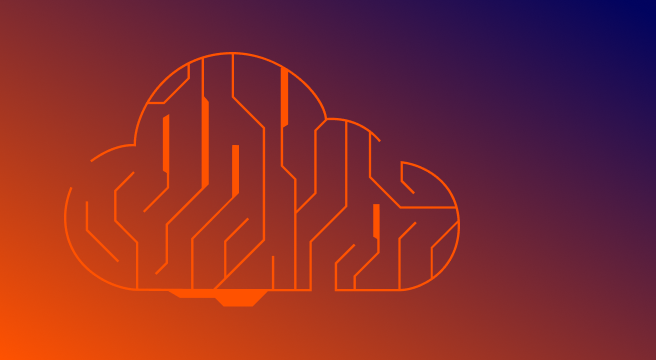CNAPP vs CSPM vs CWPP
Published | June 30, 2025 |
A cloud security tools comparison
CNAP, CSPM and CWPP each address different aspects of cloud risk. CNAPP platforms integrate the others for a broader, more context-aware solution. If you compare cloud security tools, focus on coverage depth, identity and data correlation, shift-left support and integration with your CI/CD workflows.
What is CNAPP?
A cloud-native application protection platform (CNAPP) provides full-lifecycle visibility and risk reduction across cloud environments. It combines multiple cloud security tools into a single solution, typically including:
- Cloud security posture management (CSPM)
- Cloud workload protection (CWP)
- Kubernetes security posture management (KSPM)
- Cloud infrastructure entitlement management (CIEM)
- Data security posture management (DSPM)
- Vulnerability management
- CI/CD integration
The benefit of CNAPP is in its ability to correlate identity, workload, configuration and data risks into a unified view. This context helps your security teams avoid alert fatigue and prioritize real threats over isolated findings.
Tenable Cloud Security is a CNAPP that links asset metadata, configuration state, identity relationships and runtime behavior. It supports shift-left security, least privilege enforcement and threat detection across AWS, Azure and GCP environments.
CTA: Learn more about Tenable Cloud Security.
What is CSPM?
Cloud security posture management (CSPM) tools monitor your cloud environment for configuration errors, policy violations and compliance gaps. They assess resources like:
- Storage buckets
- Virtual machines
- Serverless functions
- Identity and access management policies
- Logging and encryption settings
CSPM provides continuous visibility and helps teams comply with frameworks like NIST 800-53, SOC 2 or ISO/IEC 27001.
However, traditional CSPM tools often operate in silos, lacking integration with identity, runtime behavior or data access.
Tenable CSPM, part of its broader platform, maps configuration risks to exposure paths.
For example, a public S3 bucket with no logging and tied to an over-permissioned identity ranks higher in risk scoring than a standalone misconfiguration. This prioritization supports faster, more accurate remediation.
What is CWPP?
Cloud workload protection platforms (CWPP) protect compute workloads, including virtual machines, containers and serverless functions during runtime.
Core CWPP capabilities include:
- Image scanning for vulnerabilities
- Runtime monitoring for anomalous behavior
- Policy enforcement to block unauthorized actions
- Container security
- Host hardening
CWPP solutions are essential for cloud-native workloads that spin up quickly or operate in ephemeral environments, where traditional scanners fall short.
For instance, the Tenable 2025 Cloud Security Risk Report found that 29% of organizations still grapple with a “toxic cloud trilogy”—publicly exposed workloads that are critically vulnerable and highly privileged. This underscores the ongoing challenge of securing dynamic environments where these complex risks persist and demand continuous runtime visibility.
Tenable CWPP ties runtime findings back to source misconfigurations and identity context. If a container with a known vulnerability runs as root and connects to sensitive storage, Tenable flags it as a high-priority issue rather than just another alert.
CNAPP vs. CSPM vs. CWPP
Each tool type solves different challenges:
| Capability | CSPM | CWPP | CNAPP |
| Configuration visibility | ✅ | ⚠️ | ✅ |
| Runtime behavior | ❌ | ✅ | ✅ |
| Identity and access context | ⚠️ | ⚠️ | ✅ |
| Data risk visibility | ❌ | ⚠️ | ✅ |
| CI/CD shift-left integration | ⚠️ | ✅ | ✅ |
| Best for | Compliance & posture | Workload security | Full risk reduction |
*Key: ✅ = Fully covered, ⚠️ = Partially supported, ❌ = Not supported
CSPM and CWPP remain critical tools, but CNAPP brings them together with more context and prioritization.
That’s why many organizations view CNAPP as a CSPM alternative or a next-generation cloud security solution.
How to choose the right platform
When comparing cloud security platforms, ask:
- Does it unify posture, runtime, identity and data visibility?
- Can it prioritize risk across configurations, access and workload behavior?
- Does it support policy-as-code and shift-left workflows in CI/CD pipelines?
- Will it integrate with existing tools like GitHub, Terraform, AWS or Azure?
- Does it provide usable outputs, like IaC remediation snippets or context-aware alerts?
The right solution depends on your cloud maturity. A CSPM tool may be enough for early-stage compliance, while CNAPP supports deeper, scalable risk management across multi-cloud infrastructure.
If you’re evaluating options, check out the Tenable cloud security platform comparison and how it stacks up as a Wiz alternative.
Best practices for platform evaluation
- Start with your top risk areas—whether it’s identity sprawl, container drift or policy noncompliance.
- Test shift-left capabilities in your actual development pipelines.
- Evaluate ease of use for remediation teams, not just analysts.
- Check visibility across cloud providers, especially AWS, Azure and GCP.
- Ask for Exposure Path visualizations to understand how issues chain together.
By comparing cloud security tools based on context, not features alone, you can select a platform that reduces risk rather than just flags it.
Take a look at Tenable Cloud Security to see how capable it is to secure workloads, manage posture, and provide wholistic cloud-native protection.
Cloud security resources
Cloud security products
Cybersecurity news you can use
- Tenable Cloud Security
